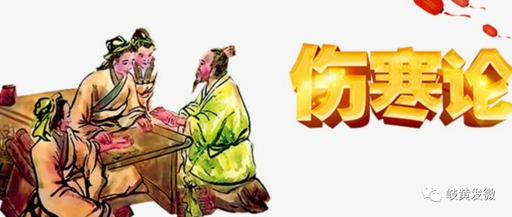Article 222: If there is thirst and a desire to drink water, with dry mouth and tongue, Bai Hu Jia Ren Shen Tang (White Tiger Decoction with Ginseng) is indicated. Pre-class consideration: Is it appropriate to use Bai Hu Tang (White Tiger Decoction) for this case? What syndrome necessitates the addition of ginseng?
Article 222: If there is thirst and a desire to drink water, with dry mouth and tongue, Bai Hu Jia Ren Shen Tang is indicated. The Jin Kui Yao Lue and the Kang Ping edition of the Shang Han Lun combine Articles 221, 222, and 223 into one, discussing the three variations of Yangming disease after misdiagnosis. Article 221 pertains to disease in the upper jiao, treated with Zhi Zi Chi Tang (Gardenia and Soybean Decoction), Article 222 pertains to disease in the middle jiao, treated with Bai Hu Jia Ren Shen Tang, and Article 223 pertains to disease in the lower jiao, treated with Zhu Ling Tang (Polyporus Decoction).
“If there is thirst and a desire to drink water, with dry mouth and tongue,” Professor Li Kesheng believes: “Dry mouth and tongue indicate cracks and prickles on the tongue. In Yangming disease, heat is intense, leading to thirst and a desire to drink water. Normally, Bai Hu Tang would be used for treatment, but if the heat is intense and injures the fluids, resulting in dry mouth and tongue with cracks and prickles, this indicates not only heat injuring yin but also a strong fire consuming qi. Therefore, merely using Bai Hu Tang to clear heat is insufficient; ginseng must be added to both tonify qi and generate fluids.” Article 168 states: “…great thirst, dry tongue and irritability, desiring to drink several liters of water, Bai Hu Jia Ren Shen Tang is indicated,” and Article 169 states: “In cases of cold damage without high fever, dry mouth and thirst, irritability, and slight aversion to cold, Bai Hu Jia Ren Shen Tang is indicated.” Dry mouth is a symptom of Bai Hu Tang; although there may be internal heat without injury to qi and fluids, clearing heat is sufficient. Thirst and a desire to drink water, with a dry tongue, especially dryness, whether in the mouth or tongue, consumes qi and fluids, thus Bai Hu Jia Ren Shen Tang must be used. This indicates that the 6th edition of the national TCM college textbook Formulas misinterprets Bai Hu Tang: “This formula is generally indicated based on the four major symptoms (i.e., great heat, great sweating, great thirst, and a flooding pulse).” The heat in Bai Hu Tang is a pathological mechanism and does not necessarily manifest as high fever; Article 169 further indicates “without high fever,” while great thirst is not related to Bai Hu Tang but is a primary symptom of Bai Hu Jia Ren Shen Tang. Articles 26, 168, 170, and this article all emphasize great thirst, indicating that the focus is not on reducing fever but on rescuing qi and fluids. This includes Article 397’s Zhu Ye Shi Gao Tang (Bamboo Leaf and Gypsum Decoction), which is essentially a modified version of Bai Hu Jia Ren Shen Tang, removing Zhi Mu (Anemarrhena) and adding bamboo leaves, Ban Xia (Pinellia), and Mai Dong (Ophiopogon), still primarily focusing on clearing heat and nourishing qi and fluids. Ginseng tonifies the spleen, assisting the spleen in ascending clear qi, thus fluids are properly transported and thirst is alleviated, preventing dryness of the mouth and tongue. Article 221 involves examining the tongue coating to differentiate cold and heat, while this article examines the tongue body to differentiate cold and heat. Tongue dryness includes both the dryness of the tongue body and the tongue coating; generally, when the tongue is dry, the tongue body appears bright red.
Article 223: If the pulse is floating, there is fever, thirst and a desire to drink water, and difficulty in urination, Zhu Ling Tang is indicated. Pre-class considerations: 1. A floating pulse indicates a condition at the surface; why is there difficulty in urination with a floating pulse, and why is Wu Ling San (Five-Ingredient Powder with Poria) not used? Wu Ling San can treat thirst and desire to drink water; why is it not applicable in this case? 2. Why is Ejiao (Donkey-hide Gelatin) used in Zhu Ling Tang? Can it be substituted with another herb?

